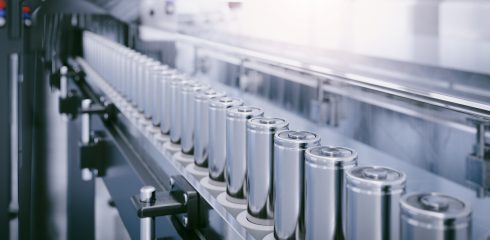
When it comes to descriptions of bulk solids in contract specs, I’m reminded of the old Rodney Dangerfield wail, “I don’t get no respect!” All too often they’re forgotten by one or both parties until something does go wrong, and then ‘you know what’ hits the fan.
Recently I’ve been involved as an expert witness in several litigations in which one of the main issues is whether or not the material supplied to the equipment met the specs.
Consider the following:
- The spec says that the material’s moisture will be no greater than xx%, but the material will be stored outdoors before it is introduced into the equipment. How then will the moisture be limited?
- The spec says that there will be xx% “fines”, but there’s no blending of the material before it is placed in the equipment.
- The material is described by a generic name (e.g., biomass, coal, dust, ash, regrind, recycle), but no further description is provided. How is the designer expected to interpret this?
No one would think of placing a dense liquid in a storage tank designed to store water without first checking with the tank’s supplier and/or a structural engineer to make sure the tank can safely store the dense liquid. In fact, it could violate the tank’s certification. Unfortunately many owners and users of bulk solids equipment have the attitude, “I can put anything in it and it will work fine!” This often leads to equipment failure or equipment not performing as expected. Or equally bad, my bulk solid never varies and the supplier always provides it exactly the same (even though I buy from multiple suppliers).
As important as it is to agree on important characteristics of the bulk solids to be placed in the equipment, it is also critical to agree on how to determine if the specs are being met. Trying to collect a “representative sample” of a bulk solid is challenging and often leads to erroneous results. Once the sample is collected it must be preserved before being tested to ensure that its properties don’t change. The next challenge is obtaining a subsample in such a way that it is representative of the larger sample. Finally, there must be agreement on details of the tests to be performed. For example, at what temperature and atmospheric conditions is the sample’s moisture to be determined?
Specs describing the bulk solids to be used in equipment are put in contracts for a reason – to provide the equipment designer with parameters needed for design, and to protect both the buyer and the seller in case something goes wrong. Limitations on the specs become critical to the operation; it can limit the cost of the system but also limit what can be handled. Setting specs for a system to handle anything will make it prohibitively expensive in most cases. Careful attention must be paid by both parties to ensure that descriptions of the bulk solid are complete and unambiguous, and that there is agreement on how and where samples will be collected and tested to ensure compliance. Respect your bulk solid and you’ll get long life from your equipment.





